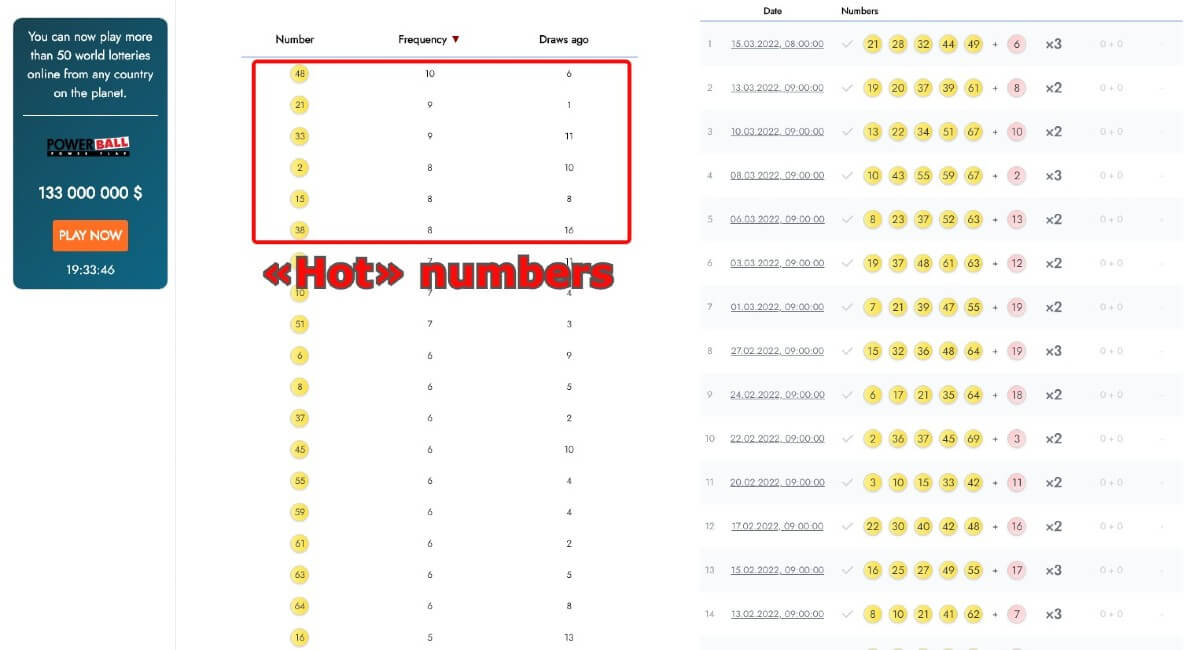The "hot" and "cold" numbers method
This method is also uncomplicated, and it is easy to find the necessary statistics for it. In a sense, it is a development of the repeating method. Here we calculate how many times each number fell out in the last draws.

For example, we calculate that in the last 10 draws, number 1 has fallen out 2 times, number 2 has not fallen out once, number 3 has fallen out 6 times, etc. After counting all the numbers, we will see the complete picture. We find that only number 3 came up six times, five times no number came up, and two numbers, 17 and 31, came up four times, for example. The rest of the numbers fell out a smaller number of times. And 11 numbers didn't drop out even once. We will call the numbers that fell out often "hot". In our case, these are numbers 3, 17, and 31. With some stretch we can consider as "hot" also the numbers that fell out 3 times. Numbers that did not fall out even once, we will call "cold". We could take not 10 of the last draw, and for example, 7 or 12 or 150, but the general principle is the same: numbers that have fallen out more often than others - "hot", and which fall out less often than others - "cold".
How to use this? In most lotteries, this approach usually works well: choose 2 - 3 of the "hot" numbers (but preferably not the hottest, they usually behave worse). In the example above, we would choose numbers 17 and 31 and we wouldn't take the "hottest" number 3.
As for the "cold" numbers, they also have a good chance of falling out, but there are a lot of them, and we only see this as a hint for which we need confirmation. Therefore, from the cold numbers, we will select only those that will be confirmed by other methods. Keep in mind, this approach is not a dogma, each lottery may have its own peculiarities, and you should try to find the best approach for your particular case. Experiment first with a small number of recent draws (3 - 5). When you start to feel better the behavior of numbers, you can try to take a larger number of last draws. But don't overdo it - take more than 15 - 20 runs is not worth it.
This method is based on the simple fact (it is easy to make sure of it by looking through the archives of draws) that the numbers fall out unevenly. More often than not, a number "keeps silent" for some time, then comes a series of falls in several draws in a row or after one or two draws, then the number again "keeps silent" for some time, etc. This fact is taken into account one way or another in many methods, but it is probably best used in the following method of accumulated expectation.

 South Africa
South Africa
 Ukraine
Ukraine
 Austria
Austria
 Europe
Europe